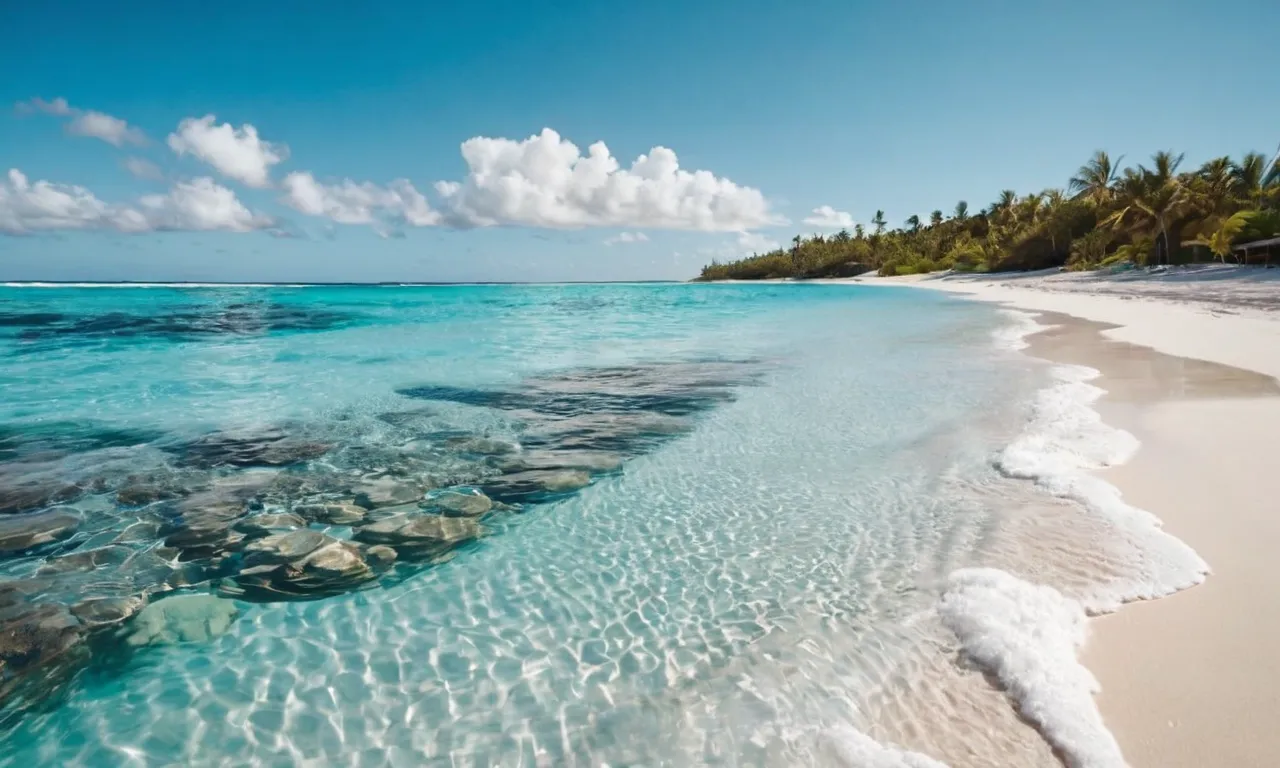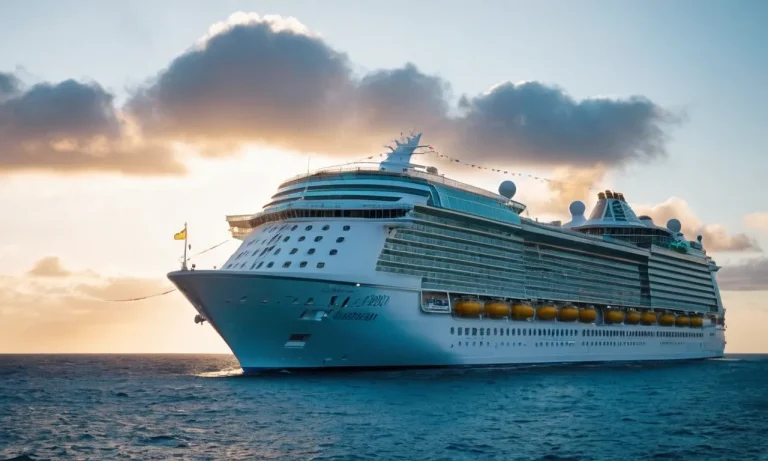The Cleanest Ocean In The World
The world’s oceans are filled with wonders, but also face major pollution threats. If you’re wondering which ocean rates as the cleanest, read on for a deep dive into the state of oceanic cleanliness.
If you’re short on time, here’s a quick answer: Based on a recent studies, the Southern Ocean surrounding Antarctica is often regarded as the cleanest, due to its remote location and ocean currents that circulate water.
In this nearly 3,000 word article, we’ll cover key factors that contribute to ocean cleanliness ratings across the globe. Using the latest scientific data and expert analysis, we’ll outline which oceans rank as the most and least polluted, exploring everything from trash accumulations to chemical contamination.
Defining Clean Oceans
When it comes to defining clean oceans, there are several factors and criteria that are taken into consideration. These factors include the presence of pollutants, the overall health of marine ecosystems, and the quality of the water itself.
Cleanliness Factors and Criteria
To determine the cleanliness of an ocean, experts look at various factors such as the presence of oil spills, chemicals, and other harmful substances. They also assess the levels of nutrients, such as nitrogen and phosphorus, which can lead to harmful algal blooms.
Additionally, the overall biodiversity and abundance of marine life are considered, as healthy ecosystems are indicative of clean waters.
In order to define the cleanliness of an ocean, specific criteria are established. These criteria may vary depending on the region and the specific goals of environmental conservation efforts. For example, one criterion could be the absence of visible debris and trash on the surface of the water, while another could be the absence of harmful bacteria or pathogens in the water.
Measuring Ocean Trash and Plastics
One of the key indicators of ocean cleanliness is the amount of trash and plastics present in the water. This is measured through various methods, including beach cleanups, aerial surveys, and sampling techniques.
Organizations like the Ocean Conservancy and the Plastic Pollution Coalition work tirelessly to collect data on the amount and types of debris found in our oceans.
According to recent studies, it is estimated that there are over 150 million metric tons of plastic in the ocean. This poses a serious threat to marine life, as animals can become entangled in the debris or mistake it for food.
It is crucial that we continue to monitor and address this issue to ensure the cleanliness and health of our oceans.
Water Quality Standards
In order to maintain clean oceans, water quality standards have been established by organizations such as the Environmental Protection Agency (EPA) and the World Health Organization (WHO). These standards set limits on pollutants and contaminants in the water, ensuring it is safe for both marine life and human consumption.
Monitoring water quality involves regular sampling and testing of various parameters, including pH levels, dissolved oxygen, and the presence of harmful bacteria. By adhering to these standards, we can work towards cleaner oceans and a healthier environment for all.
For more information on ocean cleanliness and conservation efforts, you can visit the websites of organizations such as Ocean Conservancy and Plastic Pollution Coalition.
The World’s Cleanest Ocean
The world is filled with beautiful oceans, but when it comes to cleanliness, one ocean stands out above the rest. The Southern Ocean, also known as the Antarctic Ocean, has earned the reputation of being the cleanest ocean on the planet.
Its pristine waters, minimal human impact, and unique ocean currents contribute to its remarkable cleanliness.
The Pristine Southern Ocean
The Southern Ocean is located surrounding Antarctica and remains relatively untouched by human activity. With its remote location and extreme weather conditions, very few people have the opportunity to visit this part of the world.
As a result, pollution and other human-made contaminants have had minimal impact on the Southern Ocean’s ecosystem. Its waters are crystal clear and free from the debris that plagues many other oceans.
Minimal Human Impact in Antarctica
Antarctica, the continent surrounding the Southern Ocean, is one of the least populated areas on Earth. With no permanent residents and strict regulations in place to protect its delicate environment, Antarctica remains virtually untouched by human development.
This lack of human impact extends to the Southern Ocean, creating an environment that is remarkably clean and free from pollution.
In addition to the absence of human development, Antarctica is also home to several international treaties and agreements aimed at preserving its unique ecosystem. These agreements, such as the Protocol on Environmental Protection to the Antarctic Treaty, further ensure that the Southern Ocean remains clean and unaffected by human activities.
Ocean Current Benefits for Southern Waters
The Southern Ocean benefits from unique ocean currents that contribute to its cleanliness. The Antarctic Circumpolar Current, the largest ocean current in the world, encircles Antarctica and helps to maintain the purity of the Southern Ocean’s waters.
This powerful current acts as a barrier, preventing pollution from entering the pristine waters and carrying it away from the rest of the world’s oceans.
Furthermore, the Southern Ocean’s currents also play a crucial role in the carbon cycle. They absorb a significant amount of carbon dioxide from the atmosphere, helping to mitigate the effects of climate change.
This natural carbon sink not only keeps the Southern Ocean clean but also helps to regulate the global climate.
The Most Polluted Oceans
Our oceans are facing a grave threat due to pollution. The accumulation of plastic waste, sewage discharge, and heavy shipping traffic has resulted in the degradation of marine ecosystems worldwide. Here, we will look at some of the most polluted oceans in the world and the specific concerns associated with each region.
North Pacific Ocean Concerns
The North Pacific Ocean is home to the infamous Great Pacific Garbage Patch, a colossal collection of floating debris made up mostly of plastic waste. Spanning an area estimated to be twice the size of Texas, this patch poses a significant threat to marine life.
Sea turtles, seabirds, and marine mammals often mistake plastic for food and can suffer severe injuries or even death as a result.
In addition to the Great Pacific Garbage Patch, the North Pacific Ocean also faces pollution from other sources. Agricultural runoff, industrial waste, and oil spills further contribute to the degradation of this once pristine marine environment.
Efforts are being made to address these concerns, but the scale of the problem requires a global response.
Heavy Shipping Traffic Harms North Atlantic
The North Atlantic Ocean is another heavily polluted region, primarily due to the high volume of shipping traffic. Large cargo vessels release harmful pollutants such as sulfur oxides and nitrogen oxides into the atmosphere, contributing to air pollution.
These pollutants can have detrimental effects on both marine and human health.
Additionally, accidents involving oil tankers and cargo ships can lead to devastating oil spills, causing long-term damage to marine ecosystems. The Exxon Valdez and Deepwater Horizon oil spills serve as stark reminders of the catastrophic consequences of such incidents.
Strict regulations and improved safety measures are crucial to preventing future accidents and minimizing the impact of shipping on the North Atlantic Ocean.
South Asian Oceans: Sewage and Plastics
The South Asian oceans, including the Indian Ocean and the Bay of Bengal, face significant pollution challenges from sewage discharge and plastic waste. Rapid population growth, inadequate waste management systems, and lack of awareness contribute to the problem.
The discharge of untreated sewage contaminates coastal waters, posing health risks to both marine life and local communities.
Plastic pollution is also a severe concern in the South Asian oceans. The large population and heavy reliance on plastic packaging contribute to the accumulation of plastic waste in these waters. Efforts to reduce plastic consumption and improve waste management practices are crucial to mitigating the impact on marine ecosystems.
It is essential for governments, organizations, and individuals to work together to address the pollution crisis in our oceans. By implementing sustainable practices, raising awareness, and supporting initiatives aimed at cleaning up our seas, we can strive towards a cleaner and healthier ocean for future generations.
Preserving Oceanic Purity
The world’s oceans are facing a growing threat from pollution, with industrial waste and trash disposal being major contributors. However, there are efforts underway to preserve the cleanliness of our oceans and ensure their long-term health.
By restricting industrial waste discharges, implementing trash cleanup campaigns, and educating the public on pollution dangers, we can work towards achieving the cleanest ocean in the world.
Restricting Industrial Waste Discharges
One of the key steps in preserving oceanic purity is to restrict industrial waste discharges. Many industries release harmful chemicals and pollutants into the ocean, causing significant damage to marine life and ecosystems.
By implementing strict regulations and monitoring systems, we can hold industries accountable for their actions and ensure that they adopt environmentally friendly practices. This includes treating wastewater before discharging it into the ocean and implementing proper waste management systems.
Implementing Trash Cleanup Campaigns
Another important aspect of preserving oceanic purity is through the implementation of trash cleanup campaigns. This involves organizing and conducting regular clean-up activities along coastlines and in oceanic areas where trash accumulates.
These campaigns not only help remove existing trash but also raise awareness about the impact of littering on marine life. By involving local communities, organizations, and volunteers, we can make a significant difference in reducing the amount of trash that ends up in our oceans.
Educating the Public on Pollution Dangers
Education plays a crucial role in preserving oceanic purity. By raising awareness about the dangers of pollution, we can encourage individuals to take responsibility for their actions and make environmentally conscious choices.
This includes educating the public about the harmful effects of plastic pollution, the importance of recycling, and the impact of chemical runoff on marine ecosystems. Through educational initiatives, we can empower people to become advocates for the cleanest ocean in the world.
Conclusion
While no global ocean rates perfectly pristine, Antarctica’s remote Southern Ocean stands apart for its minimal pollution levels. Still, threats exist even in these distant waters, reminding us no marine environment lies fully beyond harm’s reach.
By understanding which oceans endure the greatest pollution burdens, we gain perspective on the importance of conservation efforts across the planet. Whether achieving cleaner industrial practices, reducing plastic waste exports, or influencing public behaviors, ongoing progress depends on our shared commitment to restoring the seas that support all life.








